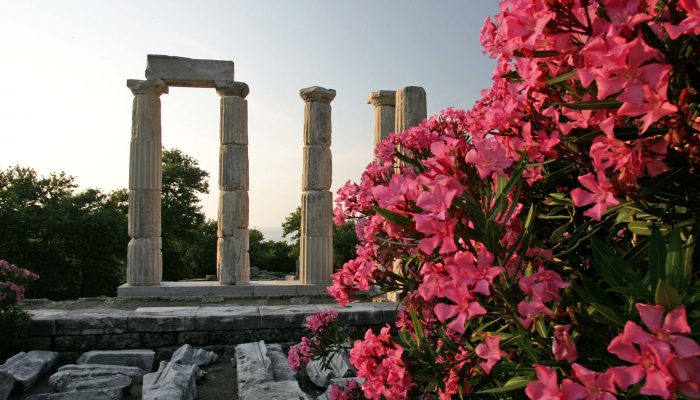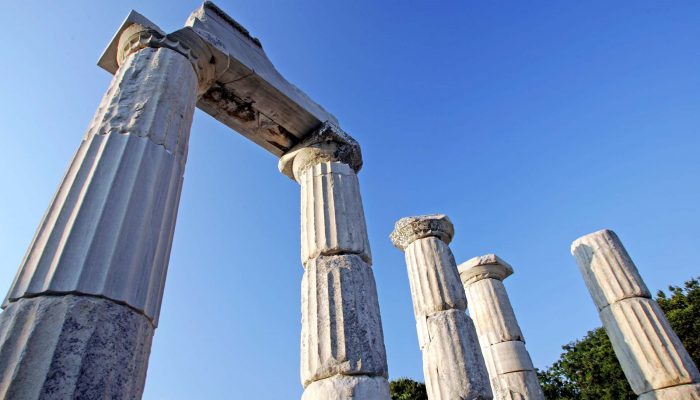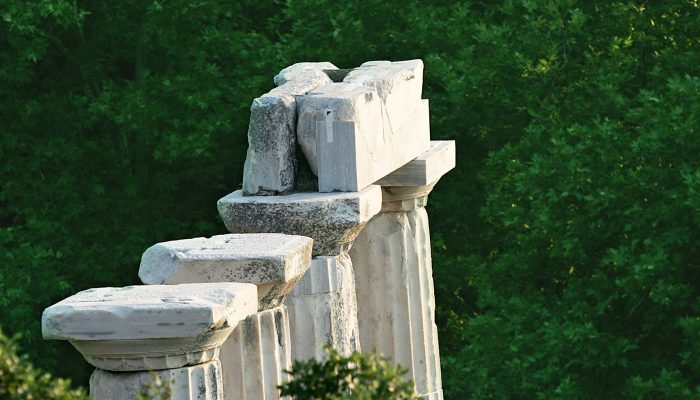Samothraki was famous in antiquity due to the mystical worship of the Great Gods taking place there. Initiation ceremonies to those gods promised among other things protection from the sea. The sanctuary experienced its golden age during the 3rd and 2nd centuries BCE and was finally abandoned towards the end of the 4th century CE. Archaeological research gives an insight into its history and evolution, but texts of Ancient Greek Secretariat do not provide any information about its mysteries and rituals.
According to mythology Trojans originate from Samothraki. It is where the parents of Alexander the Great have met, as well as the refuge of the last Macedonian king when chased by Romans. The Sanctuary of the Great Gods, is the location where the famous statue of Nike of Samothraki was found in 1863. The sanctuary itself occupies an area of almost 5 acres. The most important structures of the sanctuary are: the building of the Ritual Dance (circa 340 BCE), The Altar Court (340-330 BCE), the Votive of Philip III and Alexander IV (323-317 BCE), and the Dome of Arsinoe II (288-270 BCE). In the western part of the site are the Stoa (1st half of the 3rd century BCE), Neorion (2nd quarter of 3rd century BCE), the Miletus Athena (2nd half of the 3rd century BCE) and at the eastern end of the Prophet of Ptolemy II (285-281 BCE). The earliest indications of religious activity date back to the 7th century BCE but the construction of monumental buildings did not began before the 4th century BCE and is related to the political interests of the Macedonian royal house, already in the Kingdom of Philip II. Do not miss the chance to visit the Archaeological Museum of Samothraki.
Information (tel): +30 25510 41474.


